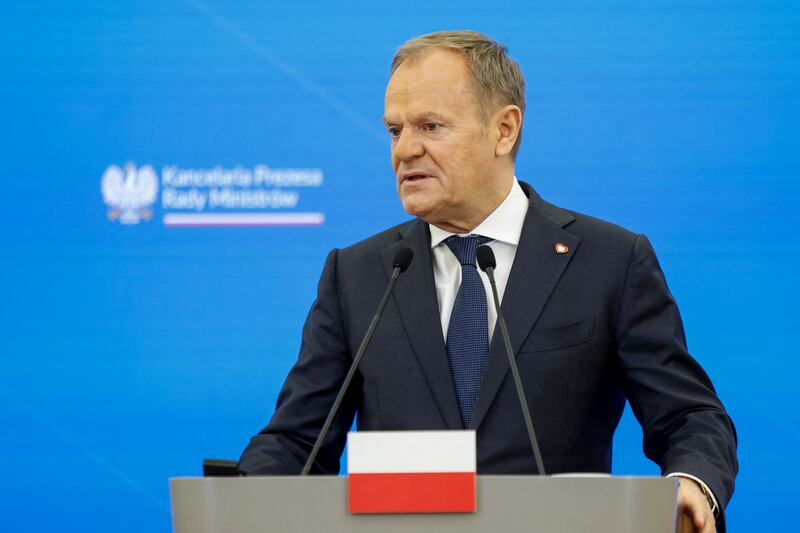The cancellation of the “live crib” outside the Mansion House caused quite a stir in recent weeks. Much debate ensued ranging from those criticising the politicisation of the situation to animal rights groups condemning the use of animals for live entertainment.
Though the interest in the crib is welcome, we are constantly reminded that we live in a postmodern, secular society, therefore, I suspect the debate to maintain the tradition of the live crib was motivated by a certain sentimentality, rather than any widely held religious beliefs.
One comment that caught my attention was made by a group highlighting the point that the controversy around the live crib “took away from far more relevant issues” in our society today, such as homelessness. I would argue the contrary.
An example of a relevant issue that has prompted protests on our streets recently is that of migrants and refugees. I believe the presence of the crib challenges us to reflect upon this issue in a profound way.
In the second chapter of Matthew’s Gospel, the story of the “Flight into Egypt” is told. After the birth of Jesus, Joseph is prompted in a dream to leave Bethlehem for Egypt (Mt 2:12-15). This is because King Herod saw the new born child as a threat and was planning to kill him.
Mary and Joseph leave along with Jesus and make their way into Egypt. Afterwards, King Herod kills all the male children in Bethlehem under two years of age. From this we see that Jesus, Mary and Joseph are forced to flee their homeland for fear of persecution.
The United Nations High Commissioner for Refugees, Filippo Grandi, defines a refugee as follows: “A refugee is someone who has been forced to flee his or her country because of persecution, war, or violence. A refugee has a well-founded fear of persecution for reasons of race, religion, nationality, political opinion or membership in a particular social group.”
Pope Francis has shown great passion for this issue during his pontificate
From the account in Matthew’s Gospel, the Holy Family were forced to flee their homeland because of a “well-founded fear of persecution” clearly making them refugees by the UN High Commissioner’s definition. Therefore, the crib reminds us, not of some sentimental story from the past, but of the plight of refugees in our midst today.
Pope Francis has shown great passion for this issue during his pontificate. His first apostolic visit a few months after his election was to Lampedusa, to highlight the plight of refugees. His encyclical, Fratelli Tutti outlines the concept of social friendship, where he urges us to respect the difference of the other and not see it as a threat, but rather something that can enrich our lives.
I experienced this when I served as a priest in Newbridge, Co. Kildare. There was a Direct Provision Centre which housed many people from various parts of the world. A group in the parish wanted to reach out in some real way to support those who found themselves in this system.
One project set up by parishioners was a “Walking Club”. Those in the Centre were invited to join us as we walked the various routes around the town. Walking with people makes it easier to enter conversation, especially with those who were struggling with the English language.
During these encounters, I heard stories of people who had to leave their homeland because of violence, persecution, and war. I met people from many different cultures, who were different from me in many ways, and yet were like me, in that they sought the same basic things in life that I suspect most of us do. Like us all, they sought a home, security for themselves and their families, a job so that they could provide for their loved ones and contribute to society. Over time, friendships were formed and our lives were enriched by the experience of getting to know one another.
The people I journeyed with displayed great dignity in the way they continued to do their best within a cumbersome system
The Direct Provision system I encountered was one where people, including children, were crammed into small hotel rooms in an undignified, demeaning manner. Many who tried to work out their residency status were met by red tape leading to frustration and in some cases despair. However, the people I journeyed with displayed great dignity in the way they continued to do their best within a cumbersome system without overt criticism of it.
Over the past couple of decades, we have been exposed to stories of Irish people, including children, who were abused in many ways. Some of those who were aware of the painful suffering in the Church and society turned the other way. This is something that we are rightly deeply critical of today. It would be sad and frightening to think that at some point in the future, our own shortfalls in the care of migrants and those in need might be brought into question.
I suspect the debate around the presence of the crib in the public square will continue in our society for some time. In this, we must remember that behind the figures gathered around the child in the manger is the story of a family who are about to be displaced. This reflects the reality of life for many who have come to our shores in recent times.
The crib does not distract us from the relevant issues of today. It exposes them.
Bishop Paul Dempsey is chair of the Catholic Bishops’ Council for Emigrants and Bishop of Achonry




